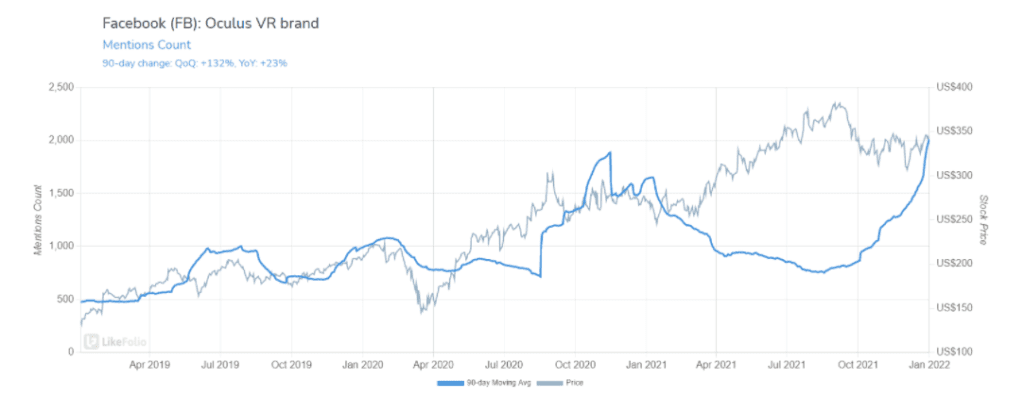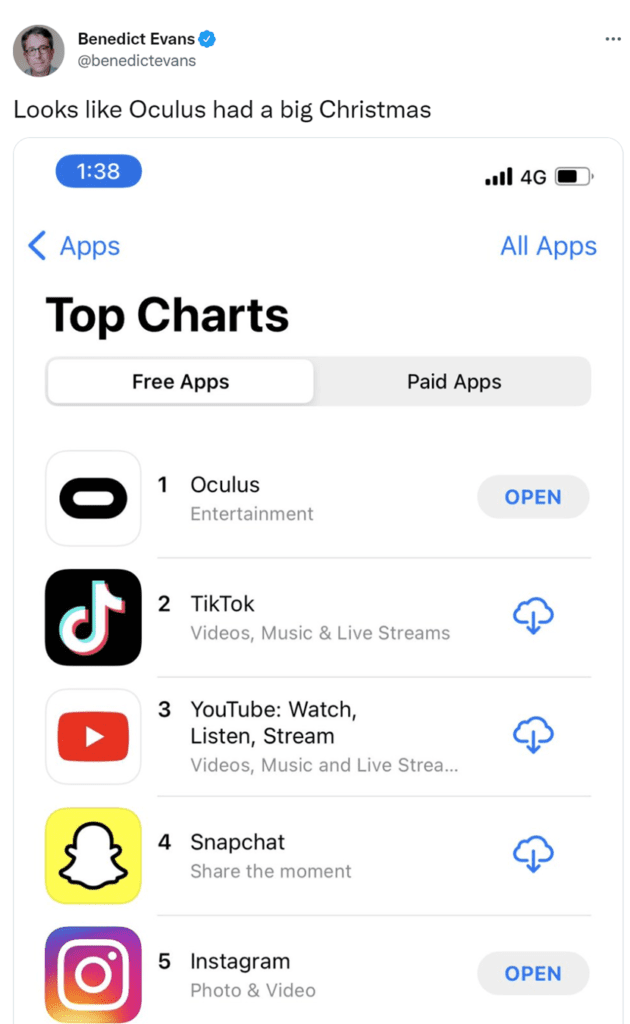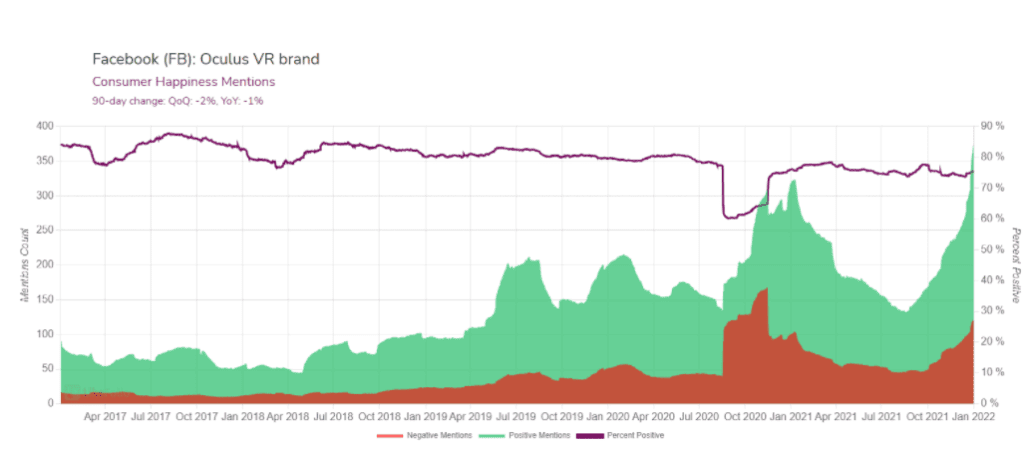Snapchat's IPO timing was...well... incredible. They literally took the company […]
Nothing Virtual about Oculus Demand
Facebook or Meta, as it is now known, doesn't have the best of reputations in general.
2021 was particularly tough for the company's image, especially following whistleblower Frances Haugen's allegations.
At the time of writing, its share price is down over 10% since its September highs.
Regardless, its Oculus VR headset product hasn't felt the impact of Meta's continuously deteriorating reputation.
Talk of the headset is coming in at an all-time high as more and more Oculus systems found their way under the Christmas tree this year… up 23% year over year.

I really found that this tweet from independent analyst Benedict Evans useful… as it showed the Oculus app was number one on the App Store on Christmas day.

So, what does this mean?
Well, the product certainly had a fantastic Christmas period in terms of sales…but that's not enough.
Jon Carmack, Chief Technology Officer of Oculus VR, explained in his Facebook Connect 2021 keynote that the company sells the headsets at a loss or breakeven, and there are no profits in the product itself.
What is most important to Meta and Oculus is user retention.
As of September 2021, the company had sold around 1.87 million Oculus Quest 2 units, and though the product has a high retention rate when it comes to VR headsets as a whole, it is still something that concerns Carmack and his team.
He stated that there are currently plenty of headsets in closets or ones that are not regularly being used, describing the buyers as "lapsed VR users."
As a result, the company is running tests to see if they can lure lapsed users back to the platform.
One such test is the launch of the virtual reality version of the game "Resident Evil 4."
However, while there was a slight spike in mentions, as it launched just slightly ahead of the holiday period, we shouldn’t draw any solid conclusions from that period.
Looking at the data, you can see from previous holiday periods that consumer happiness levels tend to rise before falling throughout the rest of the year.
With consumer happiness currently coming in at 75%, it will be important to watch how things hold up or deteriorate, as the year moves on.
